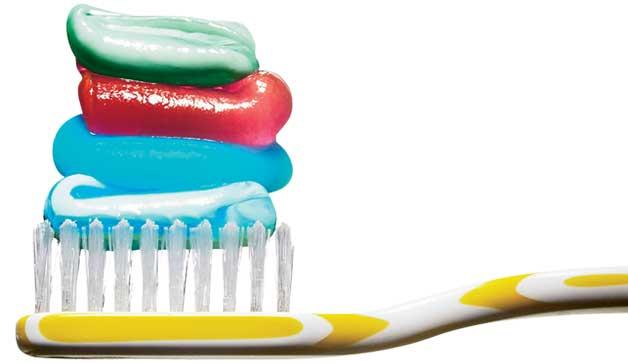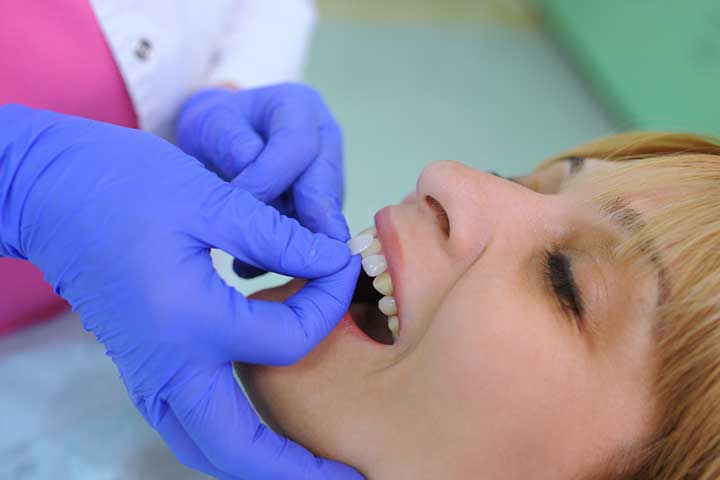Tooth whitening is a popular cosmetic procedure in London, often sought to enhance smiles and boost confidence. However, when it comes to whitening the teeth of children and adolescents, complex ethical questions arise. In the UK, strict regulations govern dental treatments for those under 18, particularly due to the EU Cosmetic Directive 2011/84/EU, which still apply and restricts the use of hydrogen peroxide-based whitening products for minors. These restrictions aim to protect young patients, but they also spark debates about balancing aesthetics, psychological well-being, and oral health. This article explores five key ethical questions surrounding teeth whitening for young people, offering insights into the challenges faced by dental professionals and families in London.
For professional guidance on this topic, Dr. Sahil Patel of MaryleboneSmileClinic provides valuable perspective. He advises that while whitening can address specific dental issues in young patients, such as discolouration from trauma, it must be approached cautiously to prioritise long-term oral health. Parents considering this treatment for their children should visit this site https://marylebonesmileclinic.co.uk/ to understand the clinical and ethical considerations involved, ensuring decisions are informed and safe.

Content
Should Young People Undergo Teeth Whitening for Aesthetic Purposes?
The rise of social media has intensified the pressure on young people to achieve a perfect smile, often driving demand for cosmetic dentistry procedures. In London, where trends in aesthetics are prominent, many adolescents seek brighter, whiter teeth to align with ideals portrayed online. However, the General Dental Council (GDC) prohibits whitening treatments for those under 18 unless there is a medical necessity, such as treating discolouration caused by trauma or conditions like amelogenesis imperfecta. This restriction raises an ethical question: should aesthetic desires ever outweigh regulatory safeguards?
The primary concern is the potential harm to developing teeth. Young enamel is still maturing, and exposure to bleaching agents like hydrogen peroxide could weaken it, leading to sensitivity or long-term damage. Dental professionals must weigh these risks against the psychological impact of discoloured teeth, which can contribute to low self-esteem or bullying. For instance, a teenager with a single dark tooth from trauma may face social challenges that whitening could alleviate. Yet, performing such procedures purely for cosmetic reasons risks prioritising appearance over health, potentially setting a precedent for unnecessary interventions. Dental practitioners in London, including those at reputable clinics, face the challenge of educating families about these boundaries while addressing genuine emotional concerns.
Is Informed Consent Possible for Young Patients?
Informed consent is a cornerstone of ethical dentistry, ensuring patients understand the risks, benefits, and alternatives of any procedure. For young patients, obtaining true informed consent is complex, as their decision-making capacity may be influenced by parental expectations or societal pressures. In London’s competitive cosmetic dentistry scene, where clinics like those in Marylebone offer advanced whitening treatments, ensuring that adolescents fully comprehend the implications of whitening is critical.
Children and teenagers may not fully grasp the long-term consequences of whitening, such as enamel erosion or the need for repeated treatments. Parents, too, may prioritise immediate aesthetic outcomes over potential risks, especially if influenced by social media trends promoting bright, uniform smiles. Dentists must navigate this dynamic by providing clear, age-appropriate explanations and ensuring that consent is not driven by external pressures. The ethical dilemma lies in balancing patient autonomy with professional responsibility, particularly when young patients may feel compelled to conform to beauty standards rather than making informed choices about their oral health.
How Should Dentists Address Social Media’s Influence on Young Patients?
Social media platforms like Instagram and TikTok have transformed perceptions of dental aesthetics, with influencers and celebrities showcasing flawless, white smiles. In London, where access to high-quality cosmetic dentistry is widespread, this trend has led to a surge in young people requesting whitening treatments. A 2023 study found that 58.3% of patients trusted dental information from social media, highlighting its powerful influence on treatment decisions. However, this reliance raises ethical concerns about unrealistic expectations and the role of dentists in shaping beauty standards.
Dentists face the challenge of countering misinformation while addressing legitimate concerns about appearance. For example, a teenager may seek whitening to emulate a “Hollywood smile,” unaware that such results often involve veneers or digital editing rather than simple bleaching. Ethical practice requires dentists to educate young patients about natural tooth variations and the limitations of whitening, especially for those under 18. In London, a cosmetic dentist might encounter pressure to perform treatments that align with trends, but ethical responsibility demands prioritising health over aesthetics. This includes discussing minimally invasive alternatives, such as composite bonding, which can address discolouration without the risks associated with bleaching.
When Is Whitening Medically Justified for Young Patients?
The GDC allows whitening for those under 18 in cases of medical necessity, such as discolouration from trauma, fluorosis, or enamel defects. These conditions can significantly affect a young person’s quality of life, making whitening a viable option to restore both function and confidence. For example, internal bleaching may be used to treat a blackened tooth following root canal treatment, a procedure that can be both therapeutic and aesthetic. In London, where advanced dental care is accessible, cosmetic dentists often encounter such cases, requiring careful assessment to justify treatment.
The ethical question is where to draw the line between medical necessity and cosmetic desire. A child with white spots from fluorosis may experience bullying, justifying whitening to improve their psychosocial well-being. However, the decision must be based on clinical evidence, not solely emotional factors. Dentists must conduct thorough examinations, including radiographs and diagnostics, to ensure the treatment addresses a specific condition without compromising oral health. The challenge lies in maintaining objectivity while empathising with the patient’s distress, a balance that London’s cosmetic dentists navigate regularly in their practices.
What Are the Long-Term Risks of Whitening Young Teeth?
The long-term implications of whitening young teeth are a significant ethical concern. Hydrogen peroxide, the primary agent in whitening products, can cause enamel micro-abrasion or increased sensitivity, particularly in immature teeth. Studies suggest that while in-office bleaching is effective, it may damage the organic matrix of enamel and dentin if not carefully managed. For young patients, whose teeth are still developing, these risks are amplified, raising questions about the appropriateness of early interventions.
In London, where patients have access to both in-office and at-home whitening options, dentists must consider the cumulative effects of repeated treatments. Adolescents who undergo whitening may require touch-ups over time, potentially leading to enamel thinning or gum irritation. Ethical practice involves discussing these risks transparently and exploring alternatives, such as microabrasion for surface stains or orthodontic solutions for alignment issues that enhance smile aesthetics. By prioritising minimally invasive approaches, cosmetic dentists in London can uphold their commitment to preserving long-term oral health while addressing patients’ concerns.
Balancing Ethical Practice with Patient Expectations
The ethical dilemmas surrounding teeth whitening for young people extend beyond clinical risks to encompass broader societal and professional responsibilities. In London, where cosmetic dentistry is a thriving industry, dentists must navigate a delicate balance between meeting patient expectations and adhering to ethical standards. The pressure to deliver immediate results, driven by cultural emphasis on appearance, can lead to requests for treatments that may not be in the patient’s best interest.
For instance, a teenager with naturally yellow teeth may feel inadequate due to societal standards, yet whitening may not be the most appropriate solution. Ethical dentists must educate patients about the natural diversity of tooth shades and the potential downsides of pursuing an overly white smile. This involves fostering open communication, where the dentist acts as both a clinician and an educator, helping young patients and their parents make informed decisions. In London’s diverse dental landscape, clinics like those in Marylebone often adopt a patient-centred approach, ensuring that treatments align with both clinical needs and ethical principles.
The Role of Regulation in Protecting Young Patients
UK regulations, influenced by the EU Cosmetic Directive, play a critical role in shaping ethical practice in teeth whitening. The restriction on hydrogen peroxide use for those under 18, except in cases of disease or trauma, reflects a commitment to patient safety. However, these regulations also create challenges for dentists addressing non-medical discolouration that impacts a young person’s mental health. The GDC’s position allows flexibility for specific conditions, but dentists must document their rationale clearly to avoid legal repercussions.
In London, where cosmetic dentistry is highly regulated, compliance with these guidelines is non-negotiable. Unregistered practitioners offering whitening treatments face prosecution, as the GDC prioritises patient safety. This regulatory framework underscores the ethical obligation to ensure that only qualified professionals, such as a cosmetic dentist in London, perform whitening procedures. It also highlights the need for ongoing education within the dental community to maintain high standards of care, particularly for vulnerable young patients.
The Psychological Impact of Dental Aesthetics
The psychological implications of dental appearance cannot be overlooked in the ethical discussion of whitening young teeth. Research indicates that 20-40% of children have white spots or discolouration, which can lead to low self-esteem or social challenges. In London, where social pressures are amplified by urban culture and media exposure, addressing these concerns is a priority for many families. Whitening, when medically justified, can improve quality of life, but the decision must be grounded in clinical necessity rather than societal expectations.
Dentists must consider the psychological benefits alongside the risks, engaging in thorough consultations to assess the patient’s motivations. For example, a child with amelogenesis imperfecta may benefit significantly from whitening, as it addresses both aesthetic and functional concerns. However, cosmetic dentists must remain vigilant against performing treatments driven solely by external pressures, ensuring that interventions serve the patient’s long-term well-being.
Alternatives to Whitening for Young Patients
Given the ethical and clinical concerns, exploring alternatives to whitening is essential for young patients. Microabrasion, which removes surface stains without penetrating enamel, is a safer option for addressing mild discolouration. Composite bonding can correct imperfections like white spots or chips, offering aesthetic improvements without the risks of bleaching. Orthodontic treatments, such as Invisalign, can enhance smile aesthetics by addressing alignment issues, which may reduce the perceived need for whitening.
In London, cosmetic dentists often combine these approaches to achieve natural, lasting results. For instance, a patient with fluorosis might benefit from a combination of microabrasion and bonding, avoiding the need for peroxide-based treatments. These alternatives reflect a commitment to minimally invasive dentistry, aligning with ethical principles that prioritise health over appearance.
The Future of Ethical Cosmetic Dentistry for Young Patients
As cosmetic dentistry evolves, so too must the ethical frameworks guiding its practice. Advances in technology, such as non-peroxide whitening agents or digital smile design, offer new possibilities for safe, effective treatments. In London, where innovation in dental care is at the forefront, clinics are exploring these options to meet the needs of younger patients while adhering to regulatory and ethical standards.
The future will likely involve greater emphasis on patient education, with dentists playing a proactive role in countering misinformation from social media. By fostering a culture of informed decision-making, cosmetic dentists in London can ensure that young patients receive treatments that enhance both their smiles and their overall health. This approach will require ongoing collaboration between dental professionals, regulators, and families to navigate the complex interplay of aesthetics, ethics, and oral care.
In conclusion, whitening young teeth raises significant ethical questions that demand careful consideration. From balancing aesthetic desires with clinical risks to addressing the influence of social media, dentists in London face unique challenges in providing ethical care. By adhering to regulations, prioritising informed consent, and exploring minimally invasive alternatives, cosmetic dentists can uphold their commitment to patient well-being while meeting the needs of a new generation.

Nancy Bonney is a health blogger and the founder of her own blog about fitness. She has been blogging for three years now and loves to share what she learns with others. Nancy enjoys reading, cooking, and staying active outdoors.







